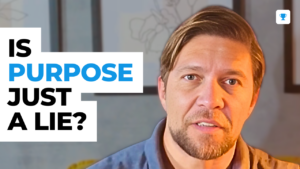
✅ FREE ACCESS: Mindset Mastery: 7 Productivity Keys For High-Performing Leaders
Ever noticed how some people “effortlessly” ace life’s decisions while others seem to fail all the time?
What’s the difference?
Why do certain individuals consistently triumph in choices when others face regrets?
What’s the secret sauce behind those who nail every choice they make?
Today, we’re going to learn How to Become a Critical Thinker to Nail Every Decision using 3 simple steps most people miss.
But before we get into it, make sure you grant your lifetime access to our free Workbook: Mindset Mastery: 7 Productivity Keys for High-Performing Leaders.
This is your chance to make the mindset shift you need to cultivate a critical thinking mindset by using the 7 mindset keys of the 1% top-performing leaders.
Critical Thinking in Today’s World
In the age of information, we’re constantly bombarded with data, news, opinions, and a myriad of voices demanding our attention.
In the middle of this noise, the ability to think clearly and critically has become even more valuable.
Stanford Research Institute has shown that critical thinking is one of the most sought-after skills in today’s workforce, especially in leadership roles.
It’s not just about intelligence or knowledge but the ability to apply that knowledge in dynamic situations effectively.
As physicist Richard Feynman once said:
“The first principle is that you must not fool yourself—and you are the easiest person to fool.”
To avoid that trap, we’re going to learn 3 specific principles of critical thinking to nail every decision:
- 1) The Pitfalls of Not Being a Critical Thinker
- 2) The Link Between Critical Thinking and Effective Decision Making
- 3) How to Cultivate a Critical Thinking Mindset
These principles highlight the importance of self-awareness in critical thinking. It’s not merely about analyzing external data but also introspecting and challenging our biases.
1) The Pitfalls of Not Being a Critical Thinker
The first thing to learn about How to Develop Critical Thinking is to learn the Pitfalls of Not Being a Critical Thinker.
How many times have you made impulsive purchases or jumped into commitments without thorough consideration?
These decisions, driven by a lack of critical thought, can lead to regret, financial strain, or lost opportunities.
The philosopher Bertrand Russell said:
“The trouble with the world is that the stupid are cocksure and the intelligent are full of doubt.”
This points to a profound pitfall: failing to be a critical thinker can lead you to overconfidence.
A lack of introspection and self-questioning can make you blind to your own limitations.
How to escape that trap?
The rule of thumb is: If you see something that’s only positive or only negative, that’s the first indication that you’re not thinking critically.
If you have a positive point of view about something, find at least one negative aspect of it.
If you have a negative point go view about something, find at least one positive aspect of it.
You will find out that most things in life are not only positive or negative.
2) The Link Between Critical Thinking and Effective Decision Making
The second thing to learn How to Develop Critical Thinking is to learn the Link Between Critical Thinking and Effective Decision Making.
Critical thinking is about finding pros and cons for effective decision-making.
What truly differentiates critical thinkers from trivial thinkers is their approach to information.
Where trivial thinkers see a mountain of facts, critical thinkers see a puzzle waiting to be solved.
Every piece of information is a potential clue, helping make a more informed decision.
Like detectives, they don’t just collect evidence; they analyze it, constantly updating their understanding as new data emerges.
In his book Thinking, Fast and Slow Daniel Kahneman, approaches the dichotomy of human thought processes.
He presents two systems:
- System 1: Our intuitive, quick-response system
- System 2: Our logical, deliberate thinking system.
Effective decision-makers harness the strengths of both thinking systems, ensuring their reactions are both instinctual and well-reasoned.
Think about a chess grandmaster.
While their moves seem spontaneous to the untrained eye, each decision is a result of countless hours of practice, analysis, and foresight.
Their brain swiftly filters through thousands of possible outcomes, choosing the one that aligns best with their strategy.
In life and business, critical thinking allows for such comprehensive analysis, helping professionals make decisions that are both immediate and impactful.
The obvious is only obvious to the trained eye.
3) How to Cultivate a Critical Thinking Mindset
The third thing to learn How to Develop Critical Thinking is to learn How to Cultivate a Critical Thinking Mindset.
There’s one word that summarizes that mindset: Curiosity.
As the saying goes:
“The mind that opens to a new idea never returns to its original size.”
Adopt The Five Whys
One practical way to hone this skill is by adopting the “Five Whys” technique, originally part of lean manufacturing.
This method encourages individuals to ask “why” five times when faced with a problem, pushing them to get to the root cause.
It’s a simple yet effective tool that moves beyond symptoms and focuses on underlying issues.
Surround Yourself With Diverse Thinkers
Another strategy is to surround yourself with diverse thinkers.
Engaging with people from various backgrounds, professions, and worldviews challenges our assumptions and exposes us to different ways of approaching problems.
This not only broadens our horizons but also sharpens our analytical skills.
Continue Updating Yourself
Last but not least, dedicating time to continuous learning is paramount.
This doesn’t just mean formal education but includes reading widely, attending seminars, and even participating in thought-provoking debates.
By constantly feeding the mind with diverse knowledge and challenging your beliefs, you keep your critical faculties sharp and agile.
In the Mindset Mastery Workbook, I present 7 mindset keys to develop critical thinking for decision-making with science-backed step-by-step processes to Nail Every Decision. The link is in the description.




